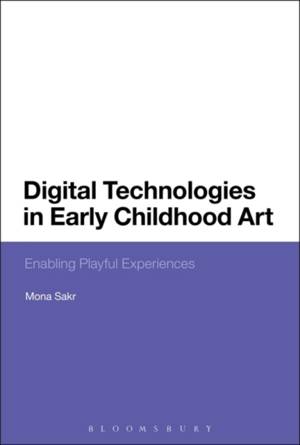
- Retrait gratuit dans votre magasin Club
- 7.000.000 titres dans notre catalogue
- Payer en toute sécurité
- Toujours un magasin près de chez vous
- Retrait gratuit dans votre magasin Club
- 7.000.0000 titres dans notre catalogue
- Payer en toute sécurité
- Toujours un magasin près de chez vous
Digital Technologies in Early Childhood Art
Enabling Playful Experiences
Mona Sakr
Livre broché | Anglais
81,45 €
+ 162 points
Format
Description
Through art children make sense of their experiences and the world around them. Drawing, painting, collage and modelling are open-ended and playful processes through which children engage in physical exploration, aesthetic decision-making, identity construction and social understanding. As digital technologies become increasingly prevalent in the lives of young children, there is a pressing need to understand how digital technologies shape important experiences in early childhood, including early childhood art.
Mona Sakr shows the need to consider how particular dimensions of the art-making process are changed by the use of digital technologies and what can be done by parents, practitioners and designers to enable children to adopt playful and creative practices in their interactions with digital technologies. Incorporating different theoretical perspectives, including social semiotics and posthumanism, and drawing on various research studies, this book highlights how children engage with different facets of art-making with digital technologies including: remix and mash-up; distributed ownership; imagined audiences and changed sensory and social interactions.Spécifications
Parties prenantes
- Auteur(s) :
- Editeur:
Contenu
- Nombre de pages :
- 240
- Langue:
- Anglais
Caractéristiques
- EAN:
- 9781350079731
- Date de parution :
- 26-07-18
- Format:
- Livre broché
- Format numérique:
- Trade paperback (VS)
- Dimensions :
- 156 mm x 234 mm
- Poids :
- 299 g

Les avis
Nous publions uniquement les avis qui respectent les conditions requises. Consultez nos conditions pour les avis.






